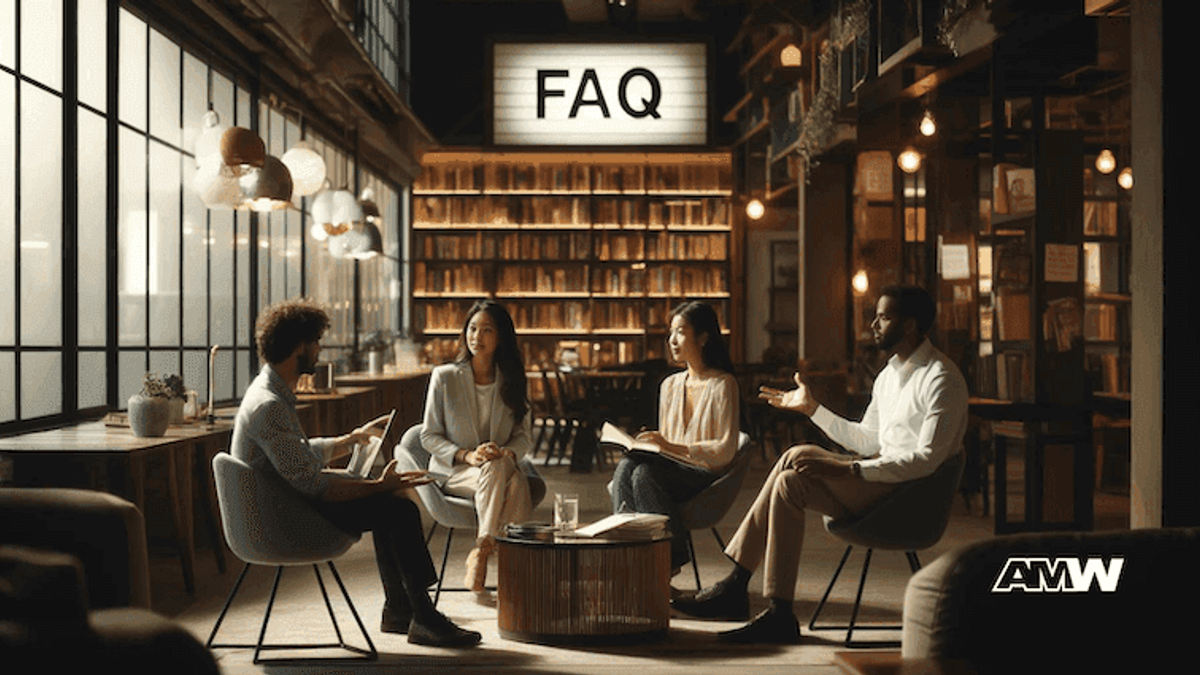Networking Events Ideas That Work

In the bustling corridors of the business world, the impact of networking can hardly be overstated. For many, the journey to professional growth and business development begins at a networking event.
Quick Summary
Networking events are crucial for professional growth, emphasizing the significance of fostering meaningful relationships. Successful gatherings hinge on thoughtful planning, including engaging themes and interactive activities, which encourage genuine conversations. Creative formats like speed networking and virtual participation broaden opportunities for connection. Incorporating technology aids in maintaining engagement, while a welcoming atmosphere boosts comfort and collaboration. Ultimatel
These events are not just about business cards or making cursory introductions; they are the breeding grounds for meaningful relationships and valuable insights.
Take, for instance, the story of two young professionals who met at a themed networking event. Amidst a sea of industry veterans, they connected over shared interests during a trivia night designed to break the ice among attendees. This initial conversation sparked in a uniquely engaging event space, led to a partnership that catalyzed their careers forward.
Ready to Grow Your Business?
Get a free consultation and custom strategy tailored to your goals.
Examples like these underscore the benefits of creative and effective networking events, where meaningful conversations are the stepping stones to professional breakthroughs.
But what exactly makes a networking event successful?
It begins with the right networking ideas that align with the needs and interests of the event attendees. Whether it's a speed networking session aimed at encouraging participants to meet as many peers as possible, a hybrid event that combines in-person and virtual networking opportunities, or a fun networking ideas-themed event where social media platforms play a central role in maintaining connections post-event, the goal is always the same: to foster an environment that encourages networking and exchange of ideas.

Successful networking events are those that engage attendees right from the get-go. They might feature interactive workshops to spark conversations, collaborative art projects to encourage attendees to share ideas, or even well-being activities that ensure the event is not just about business but also about personal growth.
The introduction of virtual networking events has further diversified the landscape, allowing attendees to connect over digital platforms, thereby broadening the networking experience to include global participants.
As event planners craft these experiences, they focus on several key aspects, including a unique venue that captures attention. These carefully chosen event themes resonate with diverse participants, and networking games are designed to encourage conversation and knowledge sharing.
From small groups gathering in a cozy event space to large groups engaging in speed dating-style exchanges, every detail is meticulously planned to ensure that each participant leaves with more than just a handful of business cards—they go with new contacts poised for further discussions and collaboration.
Understanding networking dynamics is crucial as you plan your next networking event. Whether you aim for traditional or more casual networking experiences, remember that the most successful events create connections, encourage networking, and leave attendees eager for the next event.
By incorporating these elements into your future gatherings, you set the stage for networking events that are not just fun but fundamentally transformative.
Understanding the Essentials of Effective Networking Events

At its core, a networking event is a gathering designed to foster interaction and exchange between individuals who might share professional interests or goals. These events range from structured corporate events to casual networking meetups and can take place in physical event spaces or online as virtual networking events.
Each is crafted to break the ice among strangers and pave the way for exchanging business cards and ideas.
What Constitutes a Networking Event?
A successful networking event, whether it involves young professionals or seasoned industry leaders, isn't just about putting people in a room together. It's about creating the right environment that encourages attendees to engage in meaningful conversations. This can be achieved through various networking event ideas—from speed networking sessions that allow attendees to meet one-on-one in rapid succession to themed networking events that align with specific professional interests or creative inclinations.
Hybrid events have also gained popularity, blending in-person interaction with virtual elements, allowing broader participation from attendees across different geographical locations.
Core Objectives of Networking Events: Connection, Collaboration, and Growth
The primary aim of any networking event is to facilitate connections that could lead to professional growth and collaborative opportunities. To illustrate, consider a themed event organized around the latest industry trends.
This would attract attendees and prompt them to share ideas and discuss new business opportunities. Event planners might use interactive workshops or team-building activities to encourage conversation and foster valuable connections.
For example, during a recent speed networking event aimed at encouraging participants to engage more deeply, attendees rotated among smaller groups where they could have more intimate and detailed discussions. Such configurations make networking events fun and more effective, as they allow for deeper engagement and a better exchange of ideas.
Furthermore, fun networking ideas, like a trivia night or a storytelling session about career milestones, serve as great conversation starters and make the networking experience more enjoyable and less intimidating. These activities also help spark conversations that might not occur in a more formal setting, thereby nurturing new contacts into meaningful relationships.
Event apps and social media platforms also play a crucial role in modern networking events by helping to maintain the momentum of new relationships formed at events. They allow for continuous engagement through features like messaging and posts about the event, which keeps the dialogue going even after the event concludes.
In conclusion, a successful networking event should involve engaging attendees, sparking meaningful conversations, and providing networking opportunities that encourage participants to return for your next event. Whether through large group networking ideas, themed event spaces, or creative event themes, the goal remains to create an atmosphere that encourages networking and enriches all attendees' professional lives.
Planning Your Networking Event

The planning phase is critical in turning good networking event ideas into great networking experiences. It requires consideration of key elements: venue selection, event format, and technology integration.
Each component is crucial in ensuring the event meets and exceeds its participants' expectations.
Venue Selection
Importance of Choosing the Right Venue for Interaction
The choice of venue can profoundly impact the effectiveness of your networking event. A unique venue that aligns with the event theme can significantly enhance attendee engagement and encourage networking. For instance, choosing a spacious yet intimate event space allows for more extensive group interactions and smaller, more meaningful conversations.
Whether it's a rooftop garden for a casual networking session or a well-equipped conference center for a more formal corporate event, the setting should facilitate interaction and make it easy for attendees to connect and share ideas.
Event Format

Different Formats to Suit Diverse Networking Needs
Selecting the correct format is key to accommodating the diverse needs of event attendees and achieving the networking event's objectives. Traditional networking mixers are perfect for less structured interactions and casual networking among business partners and new contacts.
On the other hand, speed networking events are excellent for young professionals who want to make quick, meaningful connections without the pressure of long conversations.
Panel discussions and workshops provide a more structured environment where attendees can share knowledge and valuable discussions about industry trends or collaborative projects. These formats spark meaningful conversations and provide valuable insights and further discussions among participants, often leading to meaningful relationships and business opportunities.
Technology Integration
Enhancing Engagement Through Digital Tools
In today's hybrid event landscape, the integration of technology is essential. Event apps and social media platforms are invaluable tools that help engage attendees before, during, and after the event. An event app can serve multiple functions:
- Facilitating the exchange of digital business cards.
- Allowing attendees to schedule one-on-one meetings.
- Providing updates about the event schedule.
Social media enhances the networking experience by encouraging participants to share their experiences in real time, promoting your event across platforms, and creating a digital footprint that can attract future events. For virtual networking events, technology becomes even more crucial as it bridges the gap between physical presence and online engagement, allowing for seamless integration of both realms and ensuring that every participant, whether attending in person or online, feels equally involved and valued.
By thoughtfully selecting a venue, choosing the right event format, and integrating the latest technological tools, event planners can create networking events that break the ice among attendees, build lasting connections, and encourage continuous engagement.
The key to a networking event is curating an environment conducive to professional growth and collaboration.
Creative Networking Events Ideas

Incorporating creative and engaging elements ensures your networking event stands out and delivers value to its participants. Each component is vital to your networking event, from themed gatherings to interactive activities and engaging expert speakers.
Here's how you can infuse creativity into your events to enhance networking opportunities and ensure attendees gather insights and have fun.
Theme-Based Gatherings
Choosing Themes That Resonate with the Audience
A well-chosen theme can transform a standard networking event into a compelling themed networking event that resonates deeply with attendees. Whether it's a focus on sustainability, technology advancements, or creative industries, selecting a theme that aligns with the interests of your target audience encourages deeper engagement and more meaningful connections.
For example, a "Future of Tech" theme can attract technology enthusiasts eager to discuss the latest trends and innovations. In contrast, a "Health and Well-being" theme might bring together professionals interested in balancing career growth with personal health.
Interactive Activities

Roundtable Discussions, Trivia, and Workshops
Interactive activities are essential for breaking the ice and encouraging attendees to engage in meaningful conversations. Consider incorporating roundtable discussions where small groups can delve into specific topics, allowing for knowledge sharing and sparking valuable talks. Industry-specific trivia can be a fun networking idea that entertains and educates, making the networking experience enjoyable and informative.
Ready to Grow Your Business?
Get a free consultation and custom strategy tailored to your goals.
Skill-based workshops can further engage attendees by providing them with practical skills or new insights they can apply directly to their professional lives, fostering a sense of accomplishment and connection among participants.
Guest Speakers and Panels
Leveraging Influential Speakers to Add Value
Guest speakers and panel discussions are excellent ways to add substantial value to your networking events. By featuring industry leaders or subject matter experts, you provide attendees with unique insights and the opportunity to hear directly from influencers within their fields. This attracts more event attendees and enhances the overall event experience, providing further discussion points and encouraging follow-up conversations.
For instance, a panel on emerging industry trends might include a mix of seasoned executives and innovative young professionals, offering a range of perspectives that enrich the discussion and provide attendees with a more comprehensive understanding of the topic.
By implementing these creative networking ideas, event planners can ensure that each networking event is not just a gathering but a productive and enjoyable experience that encourages attendees to come back. These elements help create a dynamic environment that fosters professional networking, promotes the exchange of ideas, and builds meaningful relationships—all crucial outcomes for any successful networking event.
Whether through engaging themes, interactive activities, or insightful speakers, the aim is to provide an enriching experience that empowers and inspires all who attend.
Making Networking Events Fun and Engaging

Networking doesn't have to be a stiff affair dominated by formal handshakes and the exchange of business cards. Infusing your event with fun, interactive elements makes the experience memorable and encourages genuine connections among participants.
Here's how to create a relaxed atmosphere that facilitates networking while keeping the mood light and engaging.
Tips on How to Make Events Enjoyable through Games and Interactive Sessions
Interactive games and sessions play a crucial role in making networking events fun. For example, incorporating networking games like "speed dating" for professionals or "business card bingo" can provide a playful way for attendees to interact.
These activities encourage attendees to break the ice in a less formal setting, making them more comfortable and open to making new contacts.
Moreover, consider adding a collaborative art project related to the event theme. Such an activity engages attendees creatively and sparks conversations about shared experiences and interests, leading to more meaningful connections.
Incorporating these fun networking ideas makes it easier for attendees to engage with one another, fostering a sense of community and collaboration.
Importance of a Relaxed, Welcoming Atmosphere
The atmosphere of your event can significantly influence how attendees interact with one another. A relaxed, welcoming environment is essential for encouraging open, meaningful conversations. You can achieve this by choosing an inviting event space—perhaps a venue with comfortable seating arrangements and ambient lighting that makes people feel at ease.
Event planners should also consider the overall flow of the event. Ensuring ample time for informal interactions before and after structured activities can make a big difference. For virtual networking events, creating breakout rooms for smaller groups can replicate this informal space, allowing for deeper connections among participants.
Moreover, it's important to foster a culture of inclusivity. Encouraging participants from various backgrounds and experience levels to attend can enrich the networking experience, allowing for a broader exchange of ideas. Event hosts and facilitators play a critical role here—they should be approachable and proactive in introducing and ensuring that all attendees feel included and valued.
Focusing on these aspects can ensure that your next networking event is a platform for professional growth and an enjoyable social experience. Whether through engaging games, a comfortable venue, or a well-thought-out program that allows time for casual interactions, the goal is to create a place where meaningful relationships can flourish.
These strategies enhance the networking experience and leave attendees looking forward to your next event with great anticipation.
Facilitating Effective Networking

Creating an environment that fosters effective networking is crucial to the success of any event aimed at building professional connections. This involves deploying strategies to encourage participant engagement and having a skilled facilitator guide interactions.
These elements ensure that each attendee enjoys the event and leaves with new contacts and strengthened relationships.
Strategies for Helping Participants Engage with Each Other
Effective engagement strategies are essential to make networking events successful. One powerful approach is organizing small group discussions or breakout sessions, which can be particularly effective in larger events.
This setup allows for more intimate conversation and direct interaction, which can help forge meaningful connections. Incorporating well-being activities or team-building exercises can energize attendees and create a more dynamic networking atmosphere.
Another strategy involves using an event app to help manage the event's logistics while enhancing the networking experience. Such apps can facilitate sharing contact information, scheduling one-on-one meetings, and even providing icebreaker prompts to spark conversations.
Social media platforms can also be leveraged before, during, and after the event to keep the conversation going and to encourage further engagement among attendees.
Role of the Facilitator

Guiding Discussions, Making Introductions, and Ensuring Active Participation
The facilitator's role must be balanced in the context of a successful networking event. A good facilitator acts as the event's pulse, keenly observing dynamics and stepping in to guide discussions or make introductions where necessary.
For instance, they might notice two attendees discussing a trending industry topic and introduce a third with expertise in that area, enriching the conversation and expanding networking opportunities.
Facilitators also play a crucial role in maintaining the momentum of the event. They encourage shy participants to step forward, ensure that all voices are heard, and manage the overall pace of the event. They are adept at creating a welcoming atmosphere and encouraging attendees to open up and share ideas, essential for fostering a collaborative and inclusive environment.
Moreover, facilitators must be well-prepared to handle different networking formats, from speed networking to hybrid events, and use each format's unique aspects to maximize attendee engagement. For virtual networking events, the facilitator's role expands to include managing technology platforms, ensuring that virtual interactions are as compelling and fruitful as face-to-face conversations.
Through careful planning and effective facilitation, a networking event can transform from a simple gathering into a powerhouse of opportunity, creating spaces for valuable connections and profound professional growth.
Event planners and facilitators can employ these strategies to ensure every networking session is successful and memorable, making it an essential calendar entry for business professionals looking to expand their horizons.
Evaluating the Success of Your Networking Event

Once the buzz and excitement of your networking event have settled, it's crucial to step back and assess how successful the event was in achieving its goals. This evaluation is vital not only to measure the immediate impact of the event but also to gather insights that can improve future events.
Here's how you can effectively measure the success of your networking events.
Key Metrics to Consider
To determine the success of a networking event, certain key metrics should be considered:
Ready to Grow Your Business?
Get a free consultation and custom strategy tailored to your goals.
Attendance
This includes the number of attendees and how well the event retained its audience. Did most event attendees stay for the entire duration? High attendance and retention rates often indicate that the event was engaging and met the expectations of its participants.
Participant Feedback
Gathering feedback is essential to understanding the attendee's experience and gauging their satisfaction. This feedback can cover various aspects, such as the relevance of the content, the effectiveness of the networking opportunities, the atmosphere of the event space, and the overall organization.
Follow-Up Connections Made
One of the ultimate tests of a networking event's success is the number of meaningful connections and follow-ups afterward. Are participants contacting each other, scheduling meetings, or collaborating on projects? This can often be traced back to their new contacts at the event.
Tools and Methods for Gathering Feedback and Measuring Impact
Collecting and analyzing feedback requires the right tools and methods:
Surveys
Post-event surveys are a popular method for gathering immediate feedback. These can be emailed or made available through the event app. The survey should include questions that help event planners understand what worked and what didn't and whether the event met the attendees' expectations.
Social Media Monitoring
Monitoring mentions and discussions on social media can give additional insights into how attendees feel about the event. Were they excited to share their experiences? Did they post pictures, quotes, or key takeaways? This kind of engagement usually reflects a positive experience.
Analytics from Networking Platforms
If you used a virtual networking platform or an event app, dive into the analytics provided. Look at metrics like the number of interactions, business cards exchanged, notes taken, and connections made. These platforms can offer valuable data on how actively participants engaged with each other and the content.
Follow-Up Interviews or Focus Groups
For more detailed feedback, conducting follow-up interviews or organizing focus groups with a selection of participants can be highly beneficial. These discussions can provide deeper insights into what the attendees took from the event and how they've applied their learnings and connections in their professional lives.
Evaluating these aspects will help you measure the impact of your current networking event and empower you to enhance future events. By understanding what resonates, you can continue to refine your approach, ensuring each networking event is more successful than the last.
This continuous improvement cycle is essential in the dynamic professional networking environment, where adapting and innovating are key to maintaining relevance and effectiveness.
Conclusion -Successful Networking Event

The strategies and ideas we've discussed are designed to enhance your events and transform them into pivotal, career-altering experiences.
By implementing these innovative networking event ideas and observing their impact, you can significantly elevate the quality and effectiveness of your professional interactions.
Whether you're planning a small gathering for local business partners or a large-scale corporate event, the principles of effective networking remain the same: engage attendees, foster meaningful conversations, and create an environment conducive to professional growth and collaboration.
From the intimate atmosphere of speed networking sessions to the expansive reach of hybrid events, each format offers unique advantages that can be tailored to meet the needs of your audience.
Remember, the success of a networking event hinges not just on who attends but on how they interact and what they take away. You can ensure that your event breaks the ice and builds lasting connections by choosing the right event space, integrating fun networking ideas, and leveraging tools like event apps and social media.
Event planners are encouraged to experiment with different formats and themes—a themed networking event, a casual networking session, or a series of interactive workshops. Each of these settings provides a backdrop against which meaningful relationships can flourish and where every handshake has the potential to turn into a valuable partnership.
As you move forward and apply these ideas, take the time to measure the impact of your efforts through participant feedback and follow-up connections. This feedback is invaluable for your approach and ensuring that each subsequent event is more impactful than the last.
We urge you to plan events and create experiences that resonate, inspire, and lead to real professional advancement. Let these networking events catalyze innovation and success in your professional community.
So, go ahead and implement these great networking event ideas, engage your attendees, and watch as your networking strategies transform into a robust, dynamic force that propels your business objectives forward.
FAQs

What makes a good networking event?
A good networking event is marked by diverse participation, engaging content, and seamless organization. It should cater to a broad audience, facilitating the exchange of various ideas and experiences. The content must be relevant and engaging, keeping attendees interested and involved.
The seamless organization is also crucial; everything from registration to event flow should be handled efficiently, ensuring a smooth experience for all participants.
What are some examples of networking events?
Networking events can take various forms, depending on the goals and the audience. Examples include trade association meetups, which gather professionals from specific industries to share insights and news; professional seminars, which often feature experts discussing topics of common interest; and casual mixers, which allow for more informal interactions and are great for breaking the ice among attendees.
How do you make a networking event interesting?
Consider incorporating unique themes that resonate with your audience to make a networking event interesting, such as a "Tech Innovations" theme for a tech industry meetup. Adding interactive elements like collaborative art projects or industry-specific trivia games can keep attendees engaged.
Occasionally, surprise guest appearances by notable figures in the industry can add an exciting twist, making the event memorable.
What should be included in a networking event?
Essential elements of a networking event include:
- Clear objectives.
- A detailed participant list.
- A well-structured schedule.
- Plans for follow-up.
These components help ensure that the event meets its goals, attendees know what to expect, and opportunities for further engagement are established. Providing attendees with a roadmap of the event activities and potential discussion points can also enhance the experience.
How do you facilitate a networking event?
Facilitating a networking event involves ensuring role clarity, creating an inclusive environment, and using technological tools to enhance interaction. Facilitators should clearly understand their roles—whether guiding discussions, making introductions, or encouraging quiet participants. Creating an inclusive environment means ensuring all attendees feel welcome and valued.
Tools like event apps or social media platforms can help maintain networking momentum by facilitating more accessible connections and follow-ups.

Ready to Grow Your Business?
Get a free consultation and custom strategy tailored to your goals.